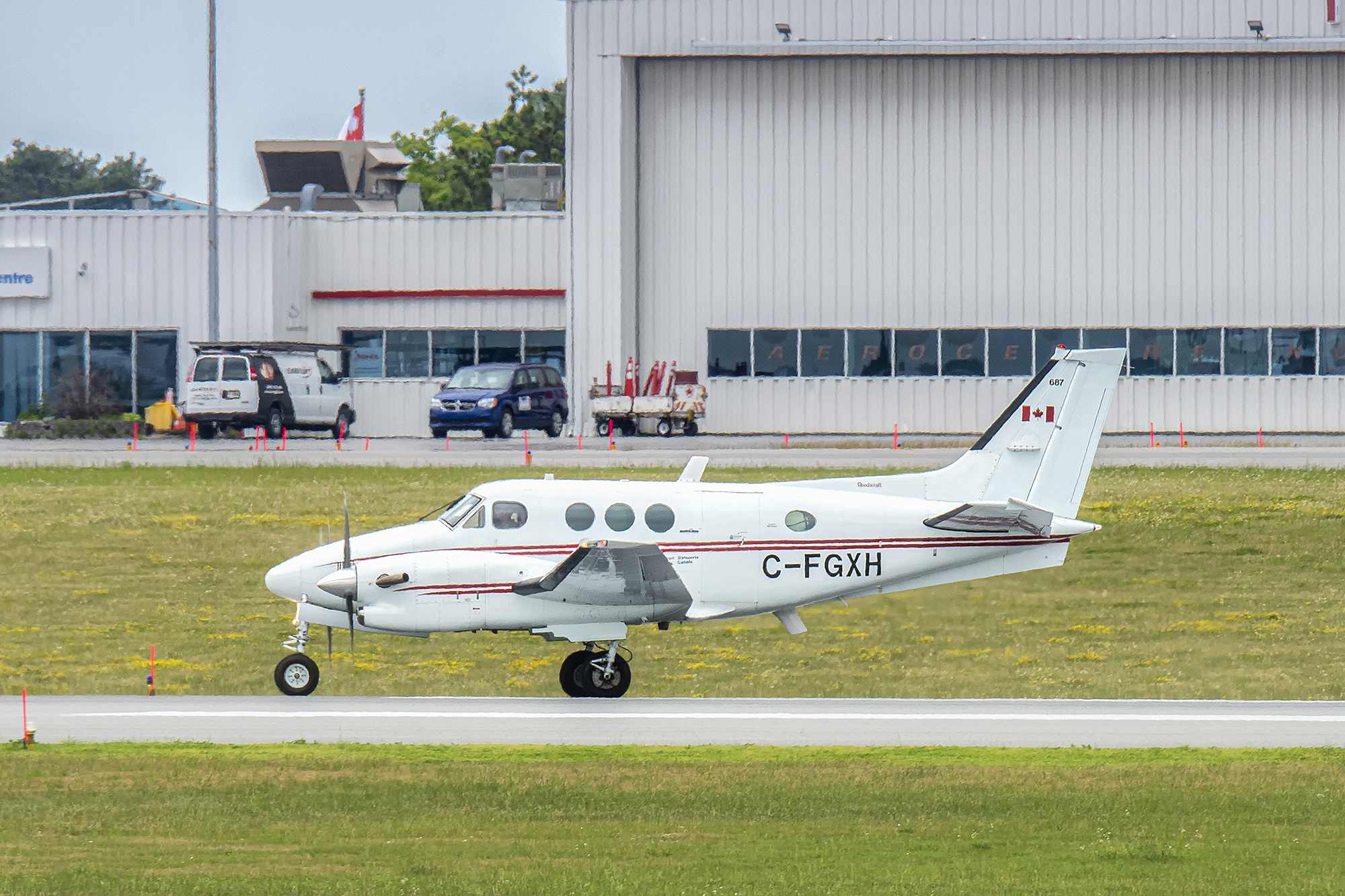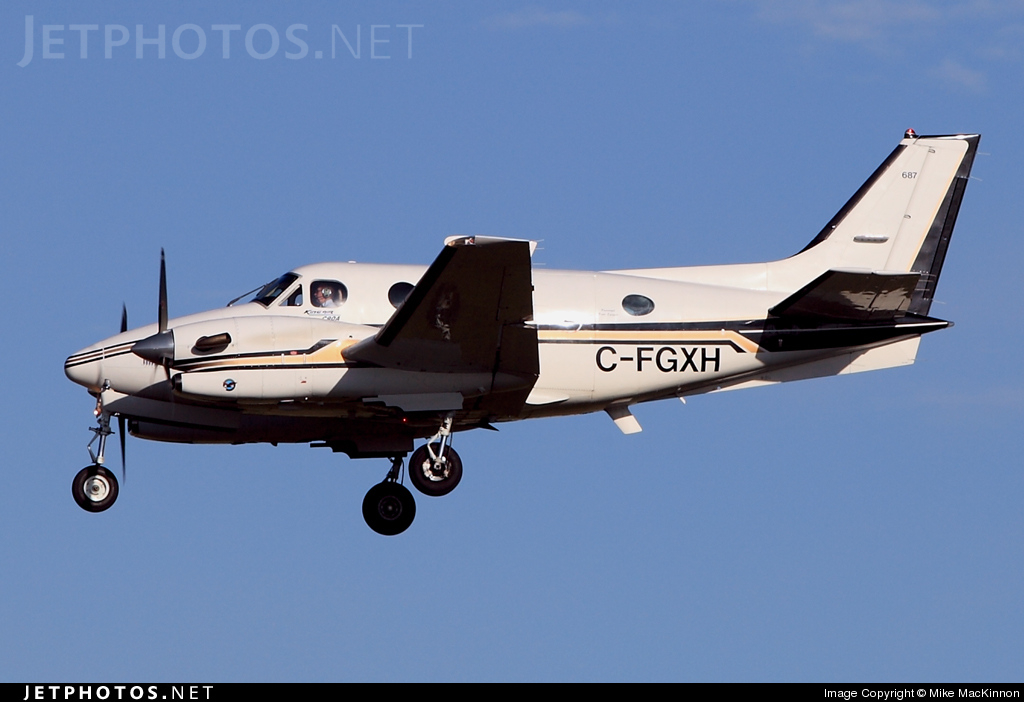RCAF Partners with Transport Canada to Trial Multi-Engine Conversion Training
News Article / October 16, 2020
Click on the photo under “Image Gallery” to see more photos.
Royal Canadian Air Force and Transport Canada
As the global competition for skilled pilots continues to grow, and the RCAF works to maintain and expand the level of experience among its pilots, work mandated under the Chief of the Defence Staff-directed Operation Experience has resulted in inventive ways of tackling the challenge.
The latest initiative to be trialed was a three-week multi-engine conversion course conducted in June 2020 by the Transport Canada Aircraft Services Directorate(TC-ASD) in Ottawa. While the course addressed the RCAF’s immediate need to find additional training capacity, the wider interdepartmental agreement over a longer term will allow officers in ground jobs to continue flying during their tour in order to maintain their skills.
TC-ASD has a fleet of King Air C90A aircraft, similar to the C90B aircraft flown at the Canadian Forces Flying School in Portage la Prairie, Manitoba, but with some marked differences. The C90A has a three-bladed propeller, but has been retrofitted to allow for a higher take-off and landing weight. As well, Transport Canada aircraft avionics have been upgraded to include electronic stability protection, which works with the autopilot to ensure that the aircraft is not over-banked or operated over/under speed. TC-ASD also has a full-motion level-C simulator, to ensure that all of the students are well prepared for aircraft training events.
2 Canadian Air Division (2 CAD) Air Operations Training (AOT) Standards Evaluation and Training in Winnipeg evaluated how this opportunity could be utilised. It was determined that, although the TC-ASD training was not completely comparable to any of the pre-wings or conversion courses conducted at Portage, it would be a worthwhile activity and a true Force Multiplier. The RCAF decided to proceed with a trial run involving its multi-engine conversion candidates, after which they would go on to their respective Operational Training Units with AOT monitoring them to validate the training they receive.
Despite the realities of COVID-19, the course was launched and completed in record time. This was all due to tireless collaboration, making use of technology, and remaining open-minded and flexible.
Major Craig Cloete, a staff officer at Chief Military Personnel in Ottawa, participated in the training, along with several pilots awaiting their Operational Training Units: Captain Greg Donkers, with 435 (Transport & Rescue) Squadron in Winnipeg; Captain Mena Ghabbour, Captain Cody Hartwick, and Captain Robbie Hindle, from 436 (Transport) and Captain Michael Soros of 437 (Transport) Squadrons in Trenton, Ontario. The course allowed 2 CAD AOT to assess how the training would be received by pilots with varying levels of experience, ranging from learning to fly a single-seat fighter up to multi-tour multi-platform pilots and “pipeline” instructors (i.e. pilots who attend flying training and then go directly into an instructor position).
The course focused extensively on crew cooperation and coordination, as well as incorporating best practices from industry, via a very skilled instructor cadre. All but one of the TC-ASD instructors are ex-military multi-engine pilots with extensive experience in both military and civilian airline operations.
The first five days of the course were designated for ground school topics, for which the students received a pre-course study package to work through before their arrival. As a testament to the professionalism of military aviators, all of the RCAF students arrived well prepared. In fact, they arrived so well prepared that a full day of ground school was shaved off, allowing the students to move on to the simulator phase earlier.
Ground school covered the universal material one would expect of any ground school; however, the introduction of Crew Resource Management principles was new because most of the students had flown only in single pilot airframes. Aided by training material and training exercise videos, the TC-ASD instructors did an excellent job of bridging the gap between single-pilot resource management and crew resource management.
“[Coming] from a single engine, single crew environment, I learned a lot about the relationship between an aircraft captain and first officer,” Captain Donkers said. “Coming from an instructor posting, I wasn’t used to having a co-pilot─or being one─so understanding the specific roles each has, as well as the ‘final say’ responsibility of the aircraft commander, will be important as I move forward to the OTU.”
The simulator phase comprised seven four-hour sessions. Each student would act as the Pilot Flying and then as the Pilot Monitoring, so about two hours in each role with a short break in between. The eighth session was the Pilot Proficiency Check ride, which was followed by two flying missions. TC-ASD repositioned some of their C90As to Ottawa from other operating bases, allowing them to run a three-aircraft wave, twice a day, which helped to complete the course in record time. The first mission focussed on Visual Flight Rules operations including asymmetric handling, approaches, landings and take-offs. The second mission focussed on Instrument Flight Rules round-robin flying with a stop to change seats, allowing each student to exercise right-hand seat operations.
All of the students exceeded the expectations of their instructor cadre, performing to a level well above that required to successfully complete the course. The students were just as pleased.
“I am now about halfway through my CC-130J OTU and can definitively say the TC training prepared me very well for the jump from single pilot to crew flying,” said Captain Hindle. “The instructors at TC did an excellent job getting us as students to work as a team, rather than two independent pilots in the cockpit.” He also noted that “the practical training we received in the simulator really helped to tie everything together.”
In addition to success of flying training aspect, the RCAF having this agreement with Transport Canada allows us to keep staff officers flying, adding to their experience, maintaining perishable skills, and possibly aiding in shorter retraining times when they rejoin their respective flying communities.
“My staff tour was expected to last two years, at a minimum,” Major Cloete said. “This opportunity has allowed me to retain perishable “soft” flying skills, like Situational Awareness, while adding to my experience in a multi-engine, multi-crew aircraft using a contemporary avionics suite.”
The initial course was undertaken with the authorities of a Letter of Arrangement and a subsequent Temporary Authority to Operate, which allow the TC-ASD aircraft to be operated as military aircraft while operated by RCAF pilots or at the direction/under the authority of the RCAF. The Letter of Arrangement is a short-term agreement, ideally leading to a Memorandum of Understanding covering a longer period of time.
The next phase of this collaborative effort will be to ascertain if there will be another course date set for a full cadre of RCAF pilots, and to set out the currency requirements for selected staff pilots.

